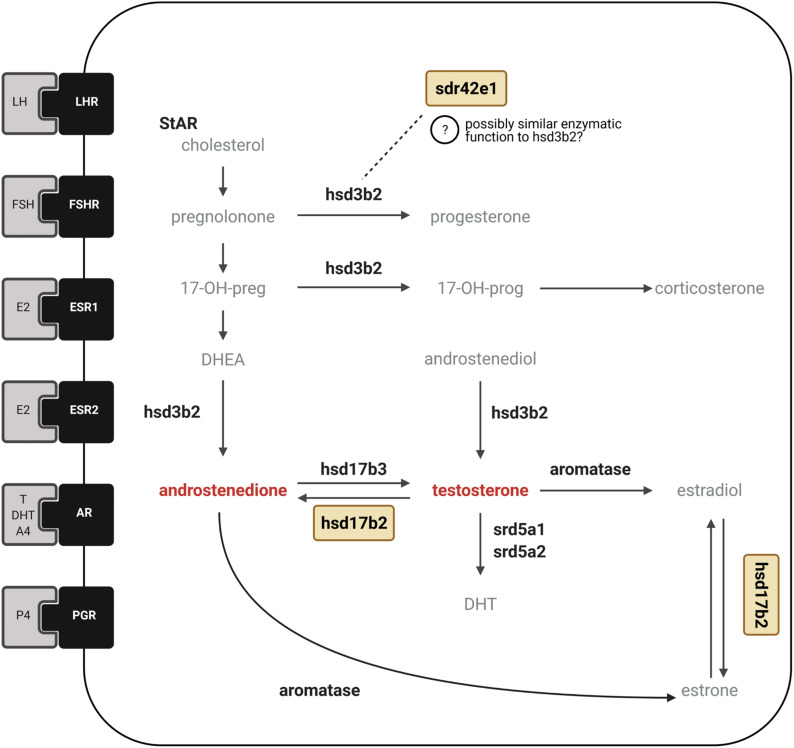FIGURE 4.
Candidate genes involved in sex hormone synthesis and signaling. Simplified diagram showing the major enzymes involved in pathways for synthesis of steroid hormones with receptors for sex hormones and gonadotropins depicted as membrane-bound. The two inversion genes that encode HSD17B2 and SDR42E1 proteins are shown in yellow boxes. In the ruff, circulating levels of testosterone are drastically reduced in inversion males compared to Independent males. Conversely, inversion morphs have greater levels of androstenedione than Independent males. The HSD17B2 gene is located in the inversion region and is responsible for the back conversion of testosterone to androstenedione, as well as estradiol to estrone, and has been suggested to be an important candidate that could explain androgenic hormonal differences among ruff morphs (Küpper et al., 2016; Lamichhaney et al., 2016). The SDR42E1 gene encodes an oxidoreductase enzyme with unknown substrate specificity (indicated with question mark) but has been suggested to have potentially similar enzymatic activity as the HSD3B2 enzyme in progesterone synthesis (Lamichhaney et al., 2016) due to conserved domains characteristic of HSD3β short-chain dehydrogenase enzymes. We measured the expression of 14 genes associated with sex hormone synthesis and signaling encoding six hormone receptors LHR, FSHR, ESR1, ESR2, AR, PGR; six steroidogenic enzymes shown in bold, HSD3B2, HSD17B2, HSD17B3, aromatase, SRD5A1, SRD5A2. Created with BioRender.com.

